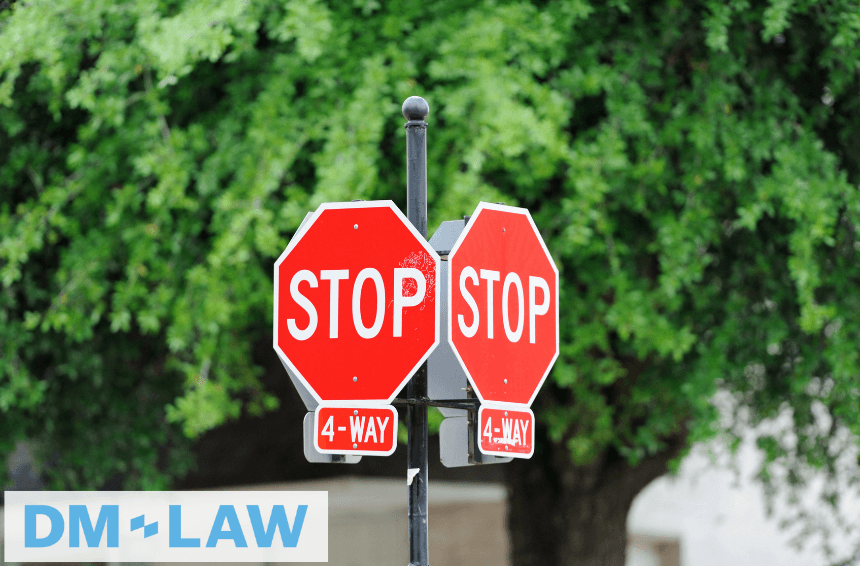Four-way stops are common at intersections but can be intimidating, especially if it’s unclear who has the right-of-way. Understanding specific scenarios, approaching the stop, driving through it, or navigating pedestrians and bicyclists can help keep traffic flowing safely and efficiently.
Four-Way Stop Crash Statistics
Nearly 700,000 police-reported crashes occur annually at stop signs, with one-third involving injuries. A study analyzed 1,788 crash reports at two-way stop sign intersections from 1996 to 2000 in 4 U.S. cities.
About 70% of crashes were due to stop sign violations, often angular collisions. Rear-end crashes made up 12% of incidents.
In two-thirds of violation cases, drivers had stopped but failed to see approaching traffic, with young drivers (<18) and older drivers (65+) disproportionately at fault. Potential solutions include improving intersection design, sight distance and enhancing stop sign visibility with markings and devices.
Basic Four-Way Stop Rules
The main rule of a four-way stop is straightforward: the first car to arrive at the intersection always has the right-of-way.
But when cars arrive simultaneously or when multiple vehicles and non-motorized road users are involved, things can get a bit tricky.
Here’s what you need to know:
1. Who Goes First at a Four-Way Stop?
- You go first if you’re the first vehicle to stop at the intersection.
- If two vehicles reach the intersection simultaneously, the driver to the right has the right-of-way.
- If 3 vehicles stop at the same time, follow this order:
- The car furthest to the right goes first.
- Then, the next driver to the left proceeds.
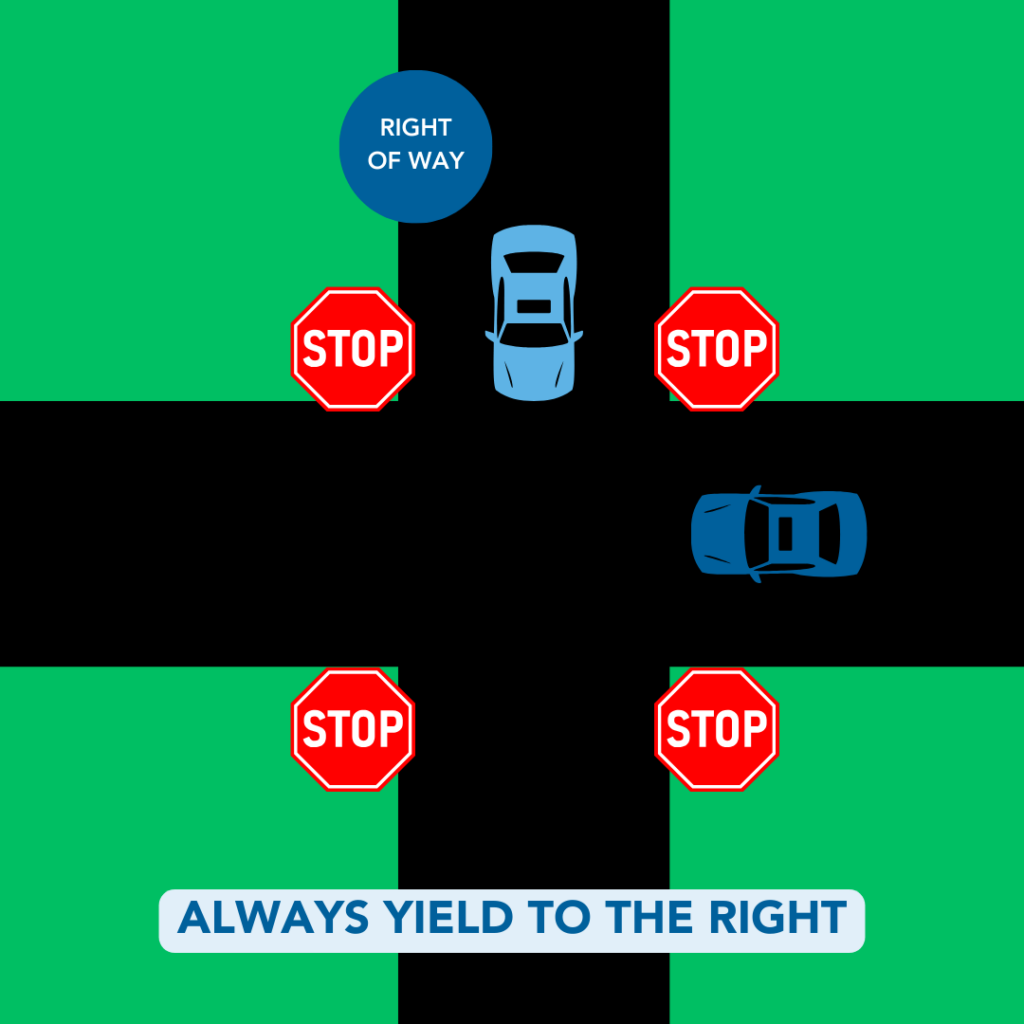
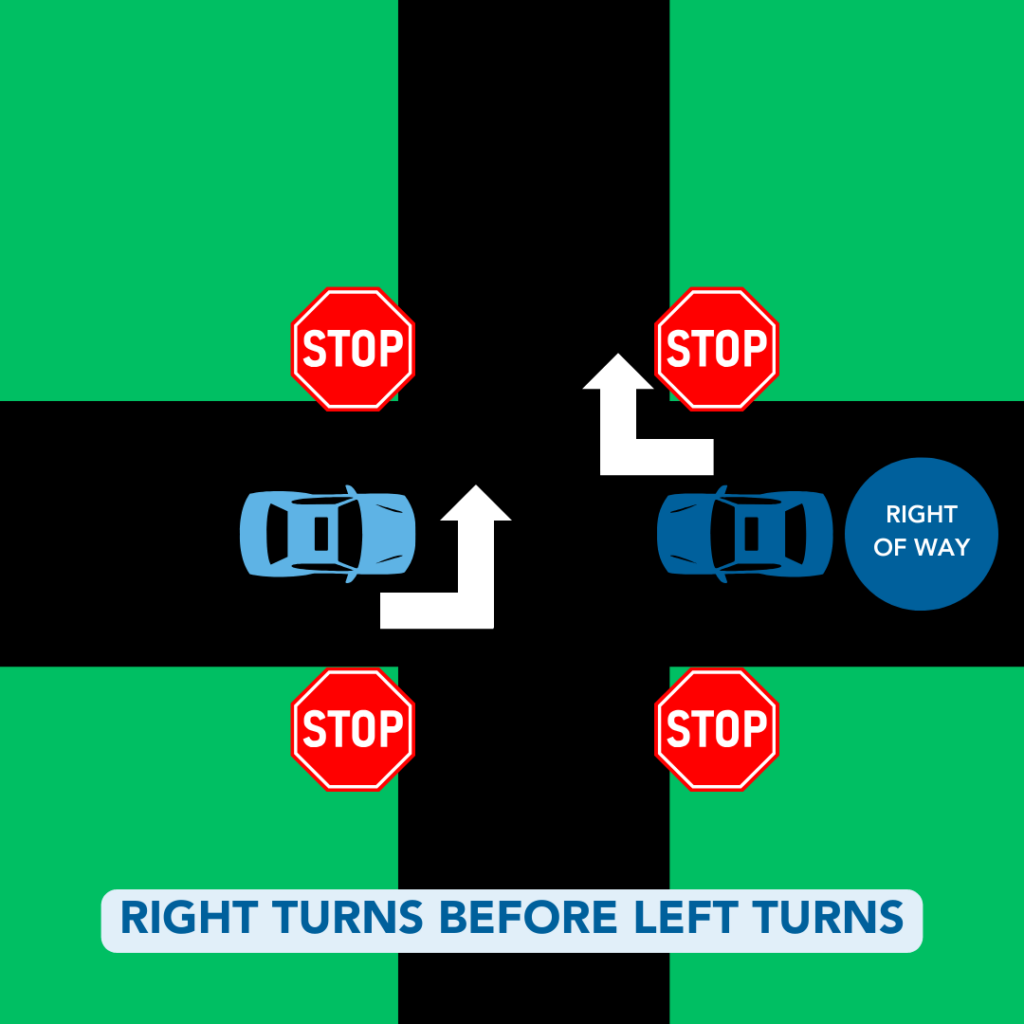
2. Right Turn vs. Left Turn
- A vehicle turning right has the right-of-way over a vehicle turning left.
- If 2 drivers are directly facing each other, they can proceed at the same time if:
- Both vehicles are turning left.
- Both vehicles are going straight and do not cross paths.
3. Straight Traffic vs. Turning Traffic
When two vehicles meet head-on:
- The car traveling straight always has the right-of-way over the car making a turn, regardless of direction.
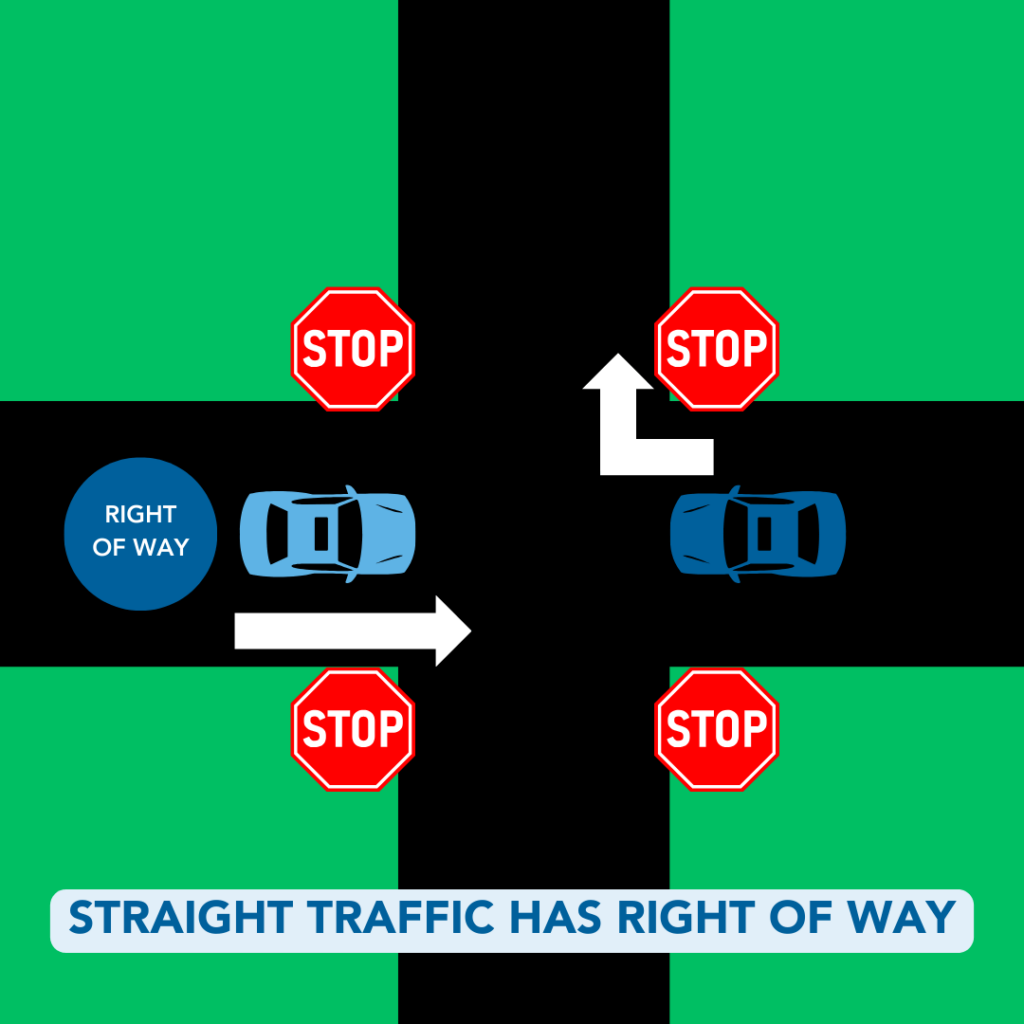
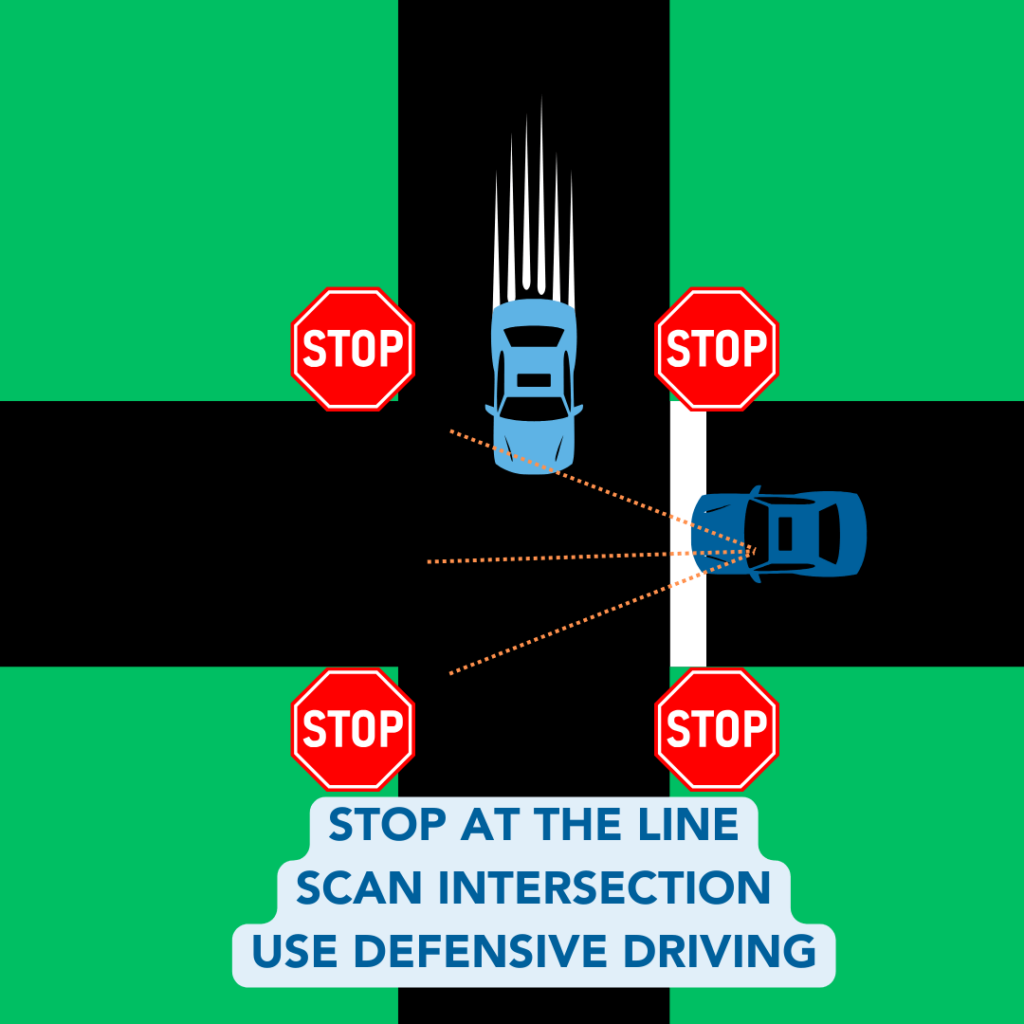
Approaching a Four-Way Stop
When driving toward a four-way stop, follow these steps for safety:
- Stop at the Line: If there’s a marked stop line, make a full stop before the line. This ensures compliance with traffic laws and provides a clear visual for other drivers to identify who stopped first. If no line exists, ensure you stop before pulling too far into the intersection.
- Scan the Intersection: Check for other vehicles, pedestrians, or bicyclists already at the intersection. Look to your left, right, and ahead to assess traffic flow.
- Use Defensive Driving: Always remain cautious even if you have the right-of-way. Not all drivers will follow the rules.
Navigating Pedestrians and Bicyclists
When pedestrians and bicyclists are present, additional considerations come into play:
For Pedestrians:
- Pedestrians generally have the right-of-way at four-way stops. Always yield if there’s someone in the crosswalk or waiting to cross.
- Eye contact helps improve safety. If you’re a pedestrian, make sure drivers see you before stepping into the crosswalk.
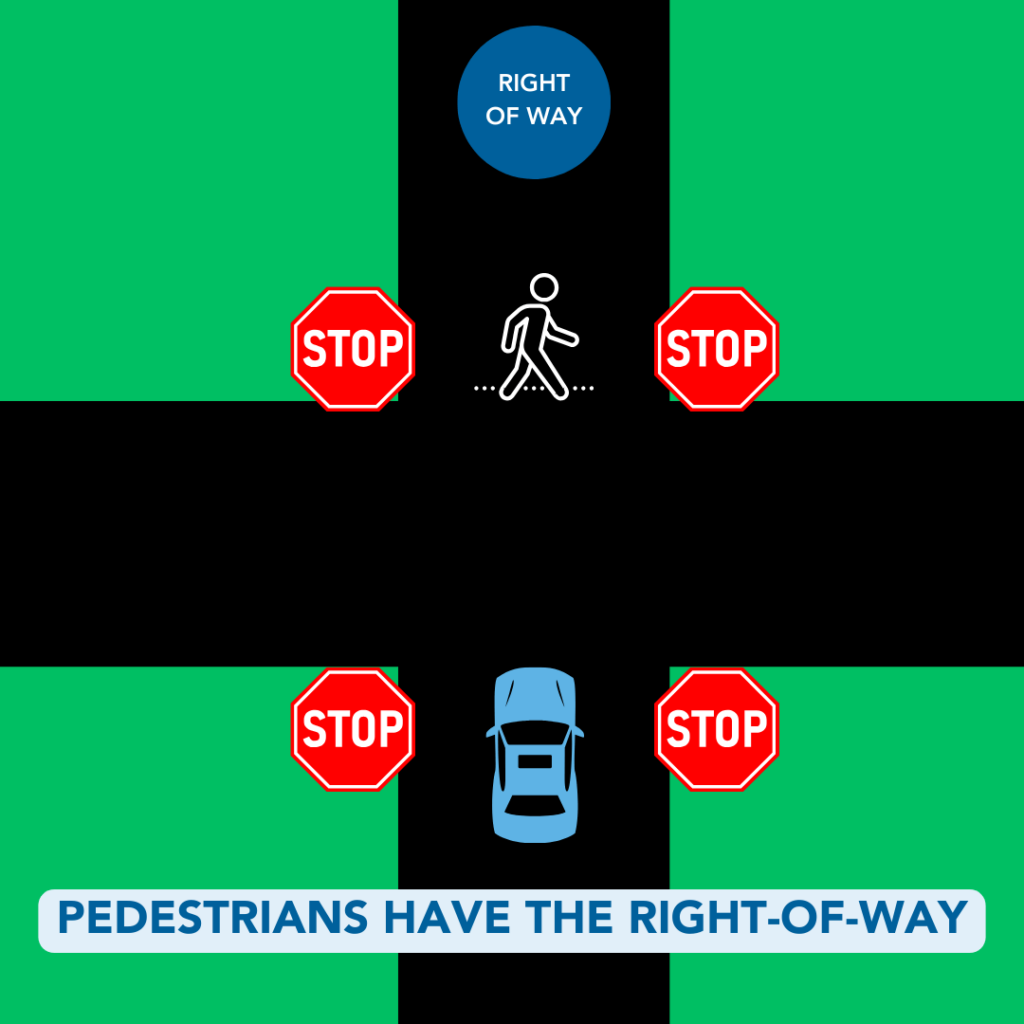
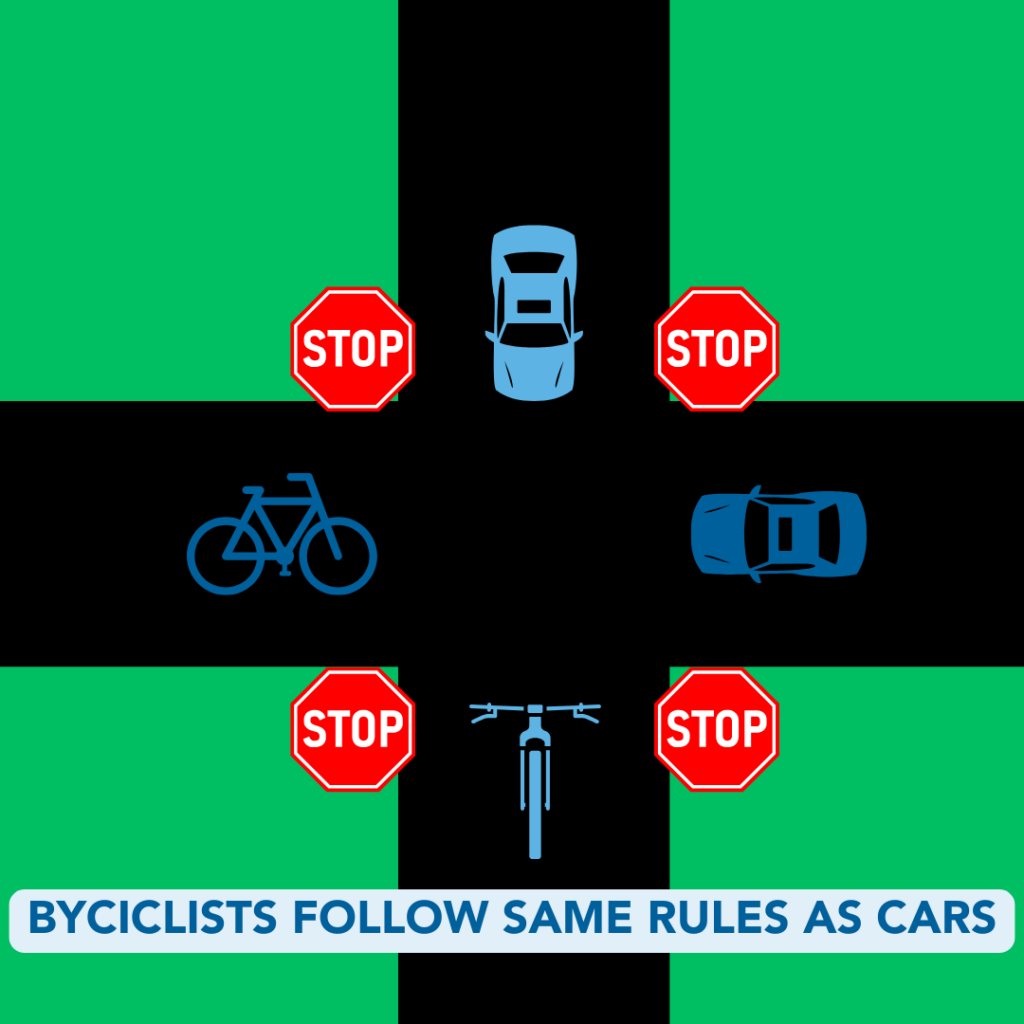
For Bicyclists:
- Bicyclists must follow the same rules as vehicles, which include coming to a full stop and yielding appropriately.
- Drivers should maintain a safe distance from bicyclists and watch for their hand signals if they intend to turn. Extra vigilance is crucial, especially at night or when visibility is low.
When Multiple Cars Reach the Stop Together
If four cars arrive at the intersection simultaneously:
- There’s no strict rule dictating who must go first. Rather, proceed with caution. Often, the most aggressive or decisive driver will go first, which can help resolve the impasse.
- Lean on eye contact and hand signals to communicate your intentions with other drivers.
- Always prioritize safety. Maintain patience and avoid pressing forward if the rules are unclear at that moment.
Common Mistakes to Avoid
- Rolling Stops: Ensure you come to a complete stop every time. Rolling through can confuse other drivers and increase the risk of collisions.
- Ignoring Right-of-Way Rules: Failing to yield according to the rules can easily lead to accidents.
- Assuming Everyone Knows the Rules: While you may follow them perfectly, assume others might not. Be alert at all times.
Driving Through a Four-Way Intersection
When it’s your turn to drive through the intersection:
- Proceed at a steady, cautious pace. Hesitation can confuse others, and speeding through could put someone else at risk.
- Always be prepared to stop or yield unexpectedly if another driver fails to follow proper right-of-way rules.
What to Do When a Car Accident Happens
Despite your best efforts, four-way intersections can still be the site of accidents due to distracted, impatient, or negligent drivers. If you find yourself in a collision at a four-way intersection, here are some quick steps to take:
- Seek Medical Attention: Make sure to get checked by a healthcare professional, even if you don’t feel injured right away.
- Report the Accident: Inform the proper authorities and file an official accident report as soon as possible.
- Document the Scene: Take photos and notes of the accident scene, including any damage, injuries, or important details.
- Speak to Any Witnesses: Talk to witnesses and collect their contact information for future reference.
- Contact a Lawyer: Reach out to a car accident lawyer who can help you understand your rights and explore your legal options.
Our car accident attorneys at DM Injury Law can confidently guide you through any case involving a 4-way stop. If you or a loved one have been severely injured in an auto accident, contact our team.
We have offices all over the Midwest, including:
- Kansas City, MO
- Topeka, KS
- Wichita, KS
- Columbia, MO
- St. Louis, MO
- Oklahoma City, OK
- Tulsa, OK
- Denver, CO
We also take cases in Nebraska.
Schedule your free consultation today to tell us your story. We are a contingency-fee-based law firm, which means you don’t pay us unless we win your case.




